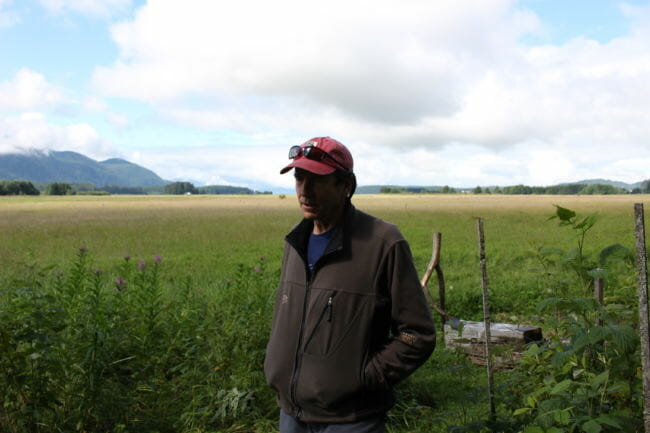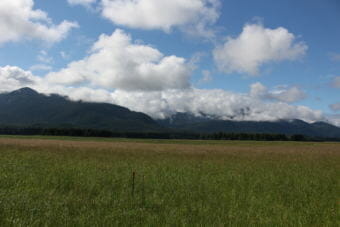
You’d think with all those glaciers melting around Southeast Alaska, sea levels would be rising. But that’s not the case.
Some parts of the region are actually gaining ground at a pretty astounding pace. But as the tideline moves, a protected wetland in Juneau is shrinking.
The view from Frank Rue’s house overlooking the Mendenhall Wetlands State Game Refuge in Juneau didn’t always look like this. He lives in a neighborhood called Sunny Point. But he says his kids used to come in from playing outside covered in mud.
“The story was, and I don’t know if it was true, that it was originally called Mud Point,” Rue said. “Because there was a lot more mud out here and even a gravel beach and then it was renamed Sunny Point.”
Sunny Point sounds like a safer real estate investment. Today, this neighborhood mostly lives up to that namesake.
From Rue’s back porch, you can see a field of long grass that stretches across to the Gastineau Channel. The tide only makes it up to this spot below Rue’s house a couple times a year. So, technically this is still a wetland.
“You know, I see ducks using these little ponds here. Eagles are using this edge to hunt,” Rue said.
But the land right outside Rue’s house is fairly new. And there’s a geologic explanation for why the view has changed so much since his kids were small.
Juneau is rising by about a half an inch a year. That rate differs from place to place. But overall, across the region the uplift is fast.
“As far as we know, these are the fastest rates in the world,” Roman Motyka, a retired glaciologist at the University of Alaska Fairbanks Geophysical Institute, said.
Motyka says what’s causing the land to rise up is a phenomenon known as isostatic rebound. As glaciers retreat, the absence of pressure from the ice causes the land to spring up.
“All you have to do is walk out to Mendenhall Glacier and see what’s going on,” Motyka said. “As a glaciologist, I hate to see my poor glaciers wasting away but that seems to be the future.”
Motyka says when researchers first started looking at this back in the 1960s, they thought that isostatic rebound was likely due to the glacial melt which occurred hundreds of years ago. But today, the scientific models suggest it’s also happening now.
“Isostatic rebound, in this case, is directly related to climate change,” Motyka said.
As the tide moves farther back from places like Sunny Point, property owners like Frank Rue can go through a legal process with the state to essentially claim ownership over these new lands.
Normally, the state owns everything up to the ordinary tideline. But with rebound, those tidelines shift.

Rue points to two stakes with orange flagging that indicate his new property boundary. Together, with his neighbor, he was able to claim roughly nine acres of the new land.
But Rue’s not keeping it. He’s selling it to the Southeast Alaska Land Trust, a conservation group that plans to make this new land part of the Mendenhall wetlands.
Rue is also a Southeast Alaska Land Trust board member. When he sold his property back to the trust he recused himself from the board.
Allison Gillum is the group’s director.
“Our long term plan is to re-incorporate them into the refuge and basically preserve the refuge boundary,” Gillum said. “So future landowners can’t continue to take land out of the refuge and make the refuge smaller.”
In fact, Gillum says the Mendenhall refuge could become bigger than its original acreage.
The land trust has entered into a purchase and sale agreement for 32 acres with Bicknill Inc., whose lands were not originally part of the refuge. Although, that agreement doesn’t include all the company’s property in the area.
Separate from that deal, the land trust has also been able to procure over 50 acres that were originally part of the Mendenhall refuge.
In a couple of years, pending the approval of the Alaska legislature, all of this wetland could be protected — in some some cases, once again.
Frank Rue’s kids might not come back with muddy boots anymore, but he thinks this refuge is still ecologically important for birds and people alike. Even after he’s gone, no one will be able to build here.
“That’s was my concern,” Rue said. “I don’t plan to do anything. But I don’t know what the next owner or the next owner after that would do.”
But now, all of the homes along Sunny Point will continue to enjoy their view and have protected wetlands as their backyard.




